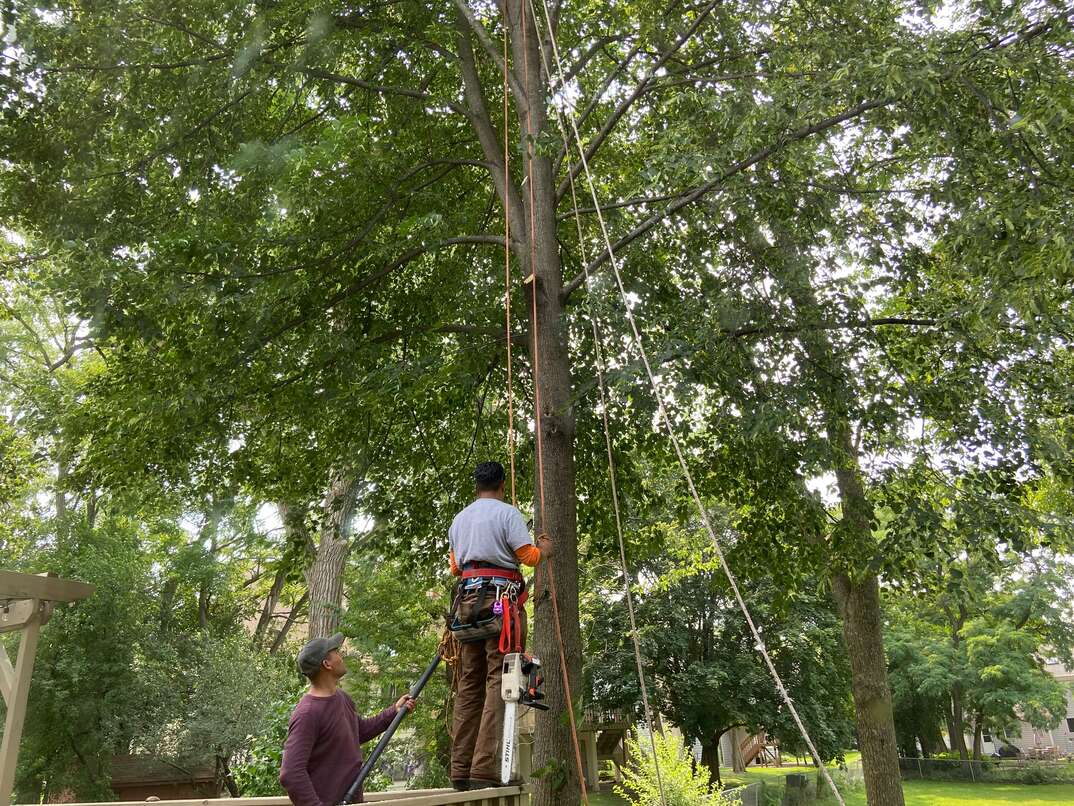Does Your Tree Need to Be Pruned or Trimmed?

Although people often use the terms “pruning” and “trimming” interchangeably when it comes to tree maintenance, the truth is that they are not one and the same.
The act of removing dead or diseased branches from a tree is known as pruning, whereas trimming a tree involves cutting back branches and limbs for aesthetic purposes. The confusion between pruning and trimming is likely due to the fact that both involve cutting back at least a portion of the tree. A good way to look at it is that pruning is generally for the health needs of the tree, while trimming is more about how the tree looks.
Does My Tree Need to Be Pruned or Trimmed?
The fast answer to the query of whether your tree needs to be pruned or trimmed is a resounding “both.” Both pruning and trimming are essential to tree health and should be done routinely. And while both are necessary for the aesthetics of your tree, pruning plays the more significant role between the two when it comes to your tree’s overall health and longevity. A look at both pruning and trimming in greater detail can help you understand which actions are needed and when.
When to Prune
The goal of pruning your tree is to remove any damaged, diseased or dead branches and to shape and thin out the tree. This improves the tree’s overall health and helps your tree establish a strong growth structure so that it can truly thrive.
Absent pruning, trees become more susceptible to local tree diseases, and their size can become unduly restricted. What’s more, pruning can also help facilitate sunlight reaching the tree’s lower branches, which has the effect of encouraging their growth and (in the case of fruit trees, at least) enhancing fruit production due to branching.
Pruning should be done far less often than trimming. Typically, trees only need to be pruned every two to three years. Ornamental trees require more frequent pruning than shade or fruit trees. The frequency of pruning greatly depends on the type of tree, how fast the tree grows and your objective in pruning it. Whether a tree is deciduous or evergreen also matters, with the former requiring pruning every two or three years and the latter being pruned less often due to their slower growth. You may need to prune evergreens more frequently, though, if they have dying branches.
Pruning is necessary and healthy for trees and actually promotes the tree’s health and beauty while stimulating its growth. Pruning your tree will allow more optimal penetration of sunlight and improved air circulation, which can lead to a healthier tree that is better capable of resisting diseases and insects. Trees left unpruned can quickly progress to be in even worse shape with unsightly dead or diseased branches that provide ideal conditions for rot and pest infestation.
When to Trim
Trimming is more about optics than anything else. Trimmed trees may take on a cleaner, more appealing look in the landscape. Homeowners often trim trees to achieve regularity in shape and size. If multiple trees growing together were inadvertently planted too closely together, trimming the trees’ branches can reduce overcrowding.
Trimming might also be done to cut back dense or overgrown limbs and branches that block a feature of the property or that prevent sunlight from entering a window or other area. Additionally, if a tree’s overgrowth impedes rainfall from reaching certain areas of the landscape, it’s not unusual for the tree to be trimmed to remedy the issue.
For young trees, landscapers recommend annual trimming. But as trees grow taller (and older), their branches begin to form and shade out other areas of the tree. When this happens, new growth may eventually become too large for the structure of the tree. What ensues, especially on larger trees, is split wood or even structural failure of the tree. So, in this case, the frequency at which your tree needs to be trimmed depends on how fast it grows and the climate in which you live.
As a rule of thumb, faster-growing deciduous trees — including elm, oak and maple — need more frequent trimming than pine or other evergreens.
Keep in mind that trimming can be a big benefit to a tree — when it’s appropriately done. However, if you remove too much from your tree, it can be detrimental to the tree’s health.
Elocal Editorial Content is for educational and entertainment purposes only. Editorial Content should not be used as a substitute for advice from a licensed professional in your state reviewing your issue. Systems, equipment, issues and circumstances vary. Follow the manufacturer's safety precautions. The opinions, beliefs and viewpoints expressed by the eLocal Editorial Team and other third-party content providers do not necessarily reflect the opinions, beliefs and viewpoints of eLocal or its affiliate companies. Use of the Blog is subject to the
Website Terms and Conditions.The eLocal Editorial Team operates independently of eLocal USA's marketing and sales decisions.

